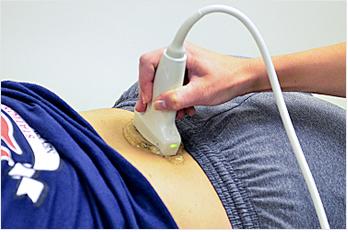ABOUT
Spinal Ultrasound
Spinal Ultrasound plays a valuable role as a differential diagnostic modality, allowing the physician to objectively identify soft tissue pathology. Its focus is on the facet, muscle and ligament of the vertebral and paravertebral region, isolating musculoskeletal trauma from the cystic or solid character of a swelling or mass. Spinal Ultrasound records changes to the soft tissue around each vertebra and aids in the treatment evaluation process.
This practical method of monitoring the treatment and recovery of patients with soft tissue abnormalities is well-accepted and poses no discomfort to the patient. The examination is performed quickly and easily, is 100% reproducible, uses no radiation and is performed with a minimum of patient preparation.
“Ultrasound has been available since 1912…further development has led to [its] ability to discern fine anatomical detail. Ultrasound is now employed in obstetrics, cardiology, nephrology and gastroenterology…Ultrasound is a valuable and cost-effective diagnostic modality. In pain management, its primary function is to diagnose lesions of soft musculoskeletal structures causing pain, otherwise not easily identified by conventional radiologic examinations.”
- J. Antonio Aldrete, M.D., M.S., “Diagnostic Ultrasound in Pain Management: An Overview,” American Journal of Pain Management Electroencephalography.

- Provides objective documentation of soft tissue injuries and subjective complaints
- Pinpoints the location of trauma
- Scans the spine for nerve and muscle irregularities
- Determines recent versus prior injury
- Presents baseline documentation of initial patient visit
- Monitors patient response to treatment
